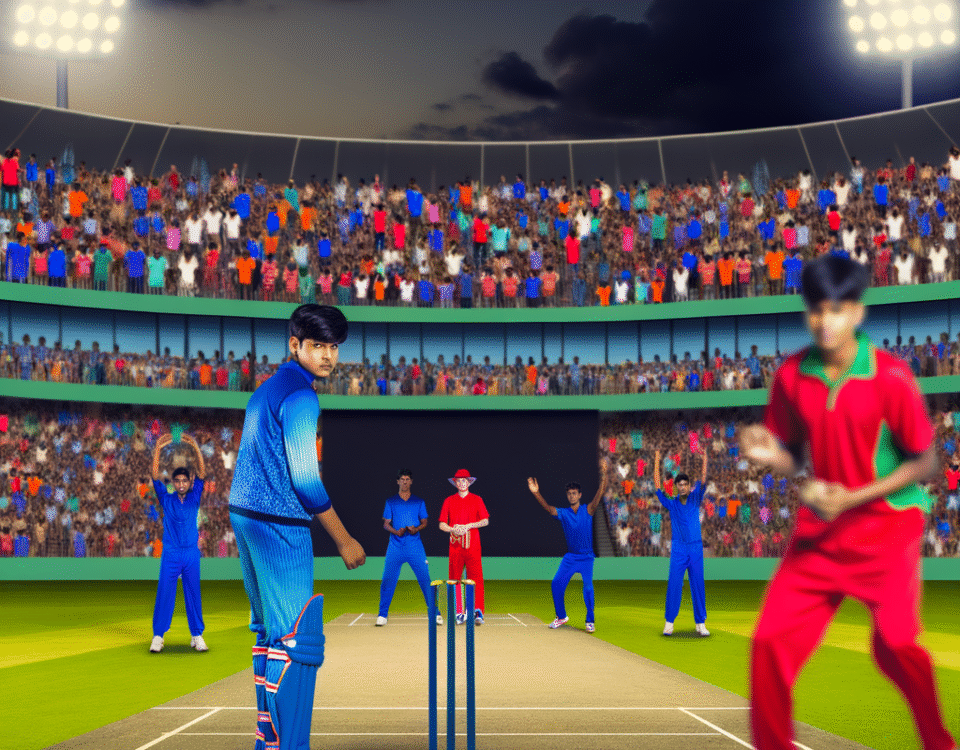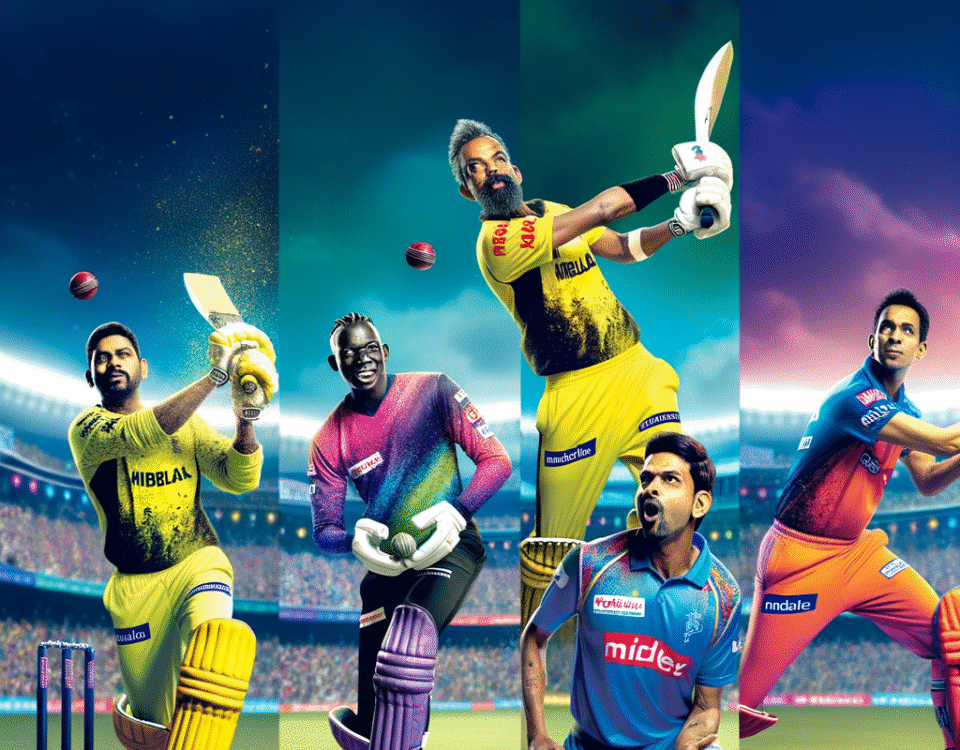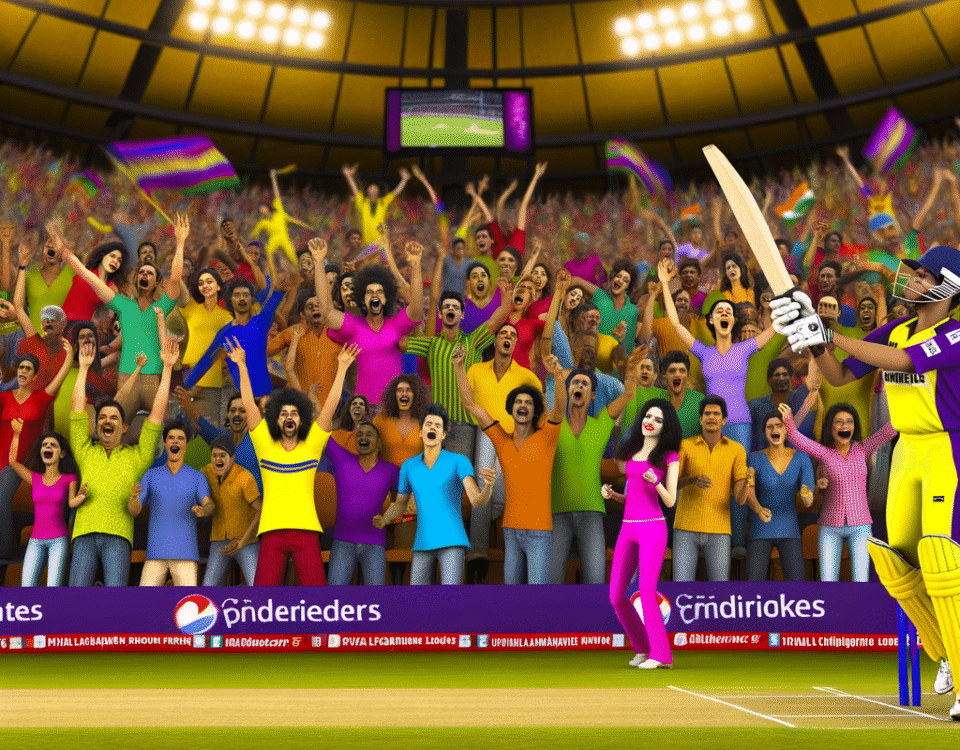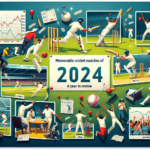
Memorable Cricket Matches of 2024 A Year in Review
April 10, 2025
Title: “IPL 2025: Underdog Uprising and the Tumble of Titans – A Comprehensive Analysis
April 25, 2025The Evolution of Cricket Gear: From Traditional Bats to High-Tech Equipment
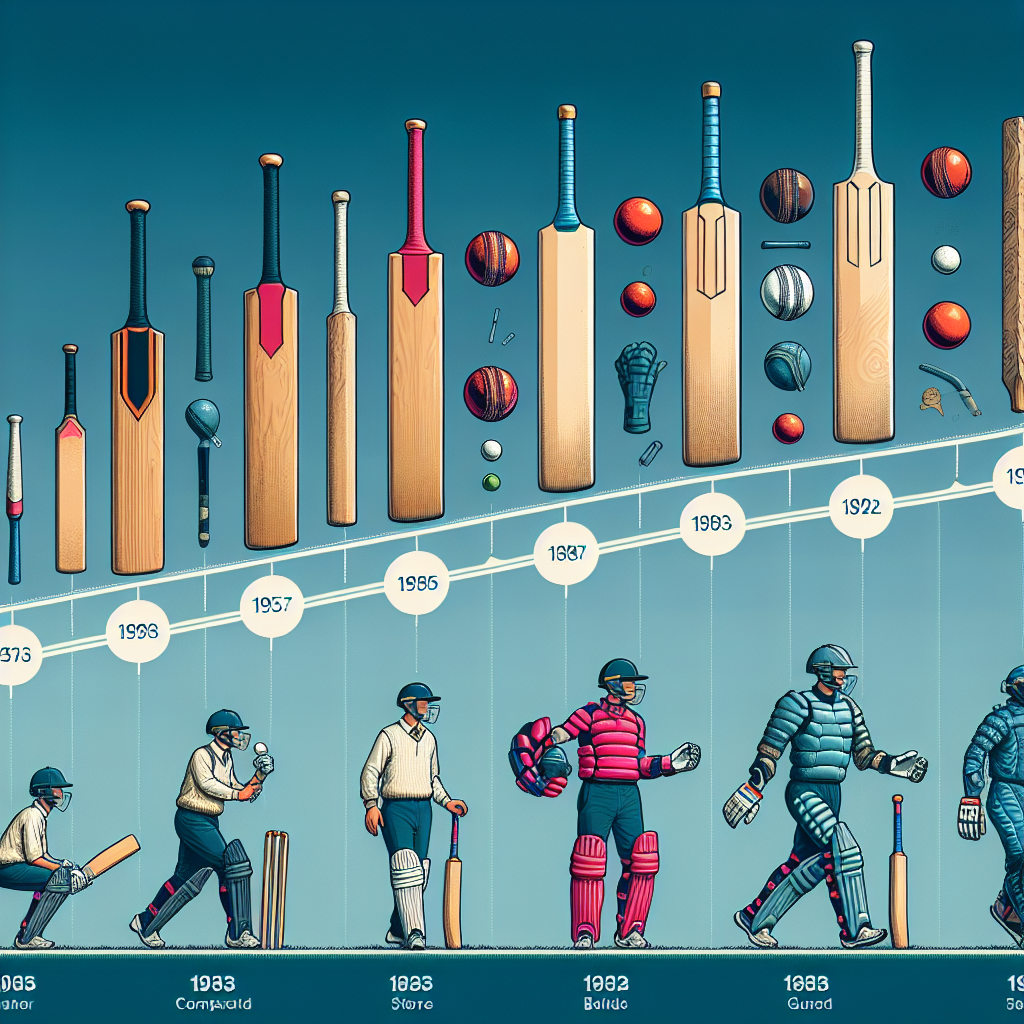
Cricket is a sport that has been played for centuries, with its origins dating back to 16th century England. Over the years, the game has evolved and so has the equipment used to play it. From traditional wooden bats to high-tech gear, the evolution of cricket equipment has been a fascinating journey. In this article, we will take a closer look at the history and evolution of cricket gear, from its humble beginnings to the modern-day equipment used by professional players.
The Early Days of Cricket Gear
The earliest form of cricket was played with a simple wooden bat and a ball made of cork or wool. The bats were handcrafted by players themselves, using willow wood. These bats were heavy and had a flat surface, making it difficult to hit the ball with power. The balls were also handmade, with a leather cover stitched together and filled with cork or wool. These early forms of cricket gear were basic and lacked the sophistication of modern-day equipment.
As the game gained popularity, the need for better equipment arose. In the 18th century, the first major change in cricket gear came with the introduction of curved bats. These bats had a convex shape, making it easier to hit the ball with more power and control. The balls also underwent a transformation, with the introduction of a cork core and a leather cover. This made the balls more durable and allowed for better swing and spin.
The Rise of Professional Cricket Gear
With the establishment of professional cricket leagues in the 19th century, the demand for high-quality gear increased. This led to the development of standardized equipment, with specific regulations and guidelines set by the governing bodies of the sport. The first major change in cricket gear during this time was the introduction of the padded gloves and leg guards. These were designed to protect the players from injuries while batting and fielding.
In the early 20th century, the first cricket helmets were introduced. These were made of leather and provided minimal protection. However, as the game became more competitive and fast-paced, the need for better head protection became evident. In the 1970s, the first modern cricket helmet was developed, with a steel grill to protect the face and a hard shell to protect the head. This innovation revolutionized the game and made it safer for players to face fast bowlers.
The Modern-Day Cricket Gear
As technology advanced, so did the equipment used in cricket. In the 1980s, the first graphite cricket bat was introduced. This lightweight and durable bat allowed for more power and control, making it a game-changer for batsmen. The traditional leather ball was also replaced by a synthetic ball, which was more durable and had better swing and spin.
In the 21st century, the use of technology in cricket gear has become more prevalent. The introduction of composite materials, such as carbon fiber, has led to the development of ultra-lightweight and powerful bats. These bats have a larger sweet spot, allowing for more power and precision in shots. The use of technology has also extended to the balls, with the introduction of the pink ball for day-night test matches and the white ball for limited-overs cricket.
Another major innovation in modern-day cricket gear is the use of protective gear for wicket-keepers. In the past, wicket-keepers had minimal protection, but with the introduction of high-speed cameras and slow-motion replays, it became evident that they were at risk of serious injuries. As a result, specialized wicket-keeping gear, including helmets, chest guards, and leg guards, were developed to ensure the safety of players behind the stumps.
Case Studies: The Impact of Technology on Cricket Gear
1. The Kookaburra Turf Ball
The Kookaburra Turf Ball is a revolutionary cricket ball that was introduced in the 1990s. It is made of a cork core and a leather cover, but what sets it apart is the stitching. The ball is hand-stitched using a special waxed thread, which makes it more durable and allows for better swing and spin. This innovation has had a significant impact on the game, with bowlers being able to generate more movement and spin, making it more challenging for batsmen to score runs.
2. The MRF Genius Grand Edition Bat
The MRF Genius Grand Edition Bat is a high-tech cricket bat that was developed in collaboration with Indian cricket legend Sachin Tendulkar. It is made of a combination of carbon fiber and titanium, making it lightweight and powerful. The bat has a larger sweet spot and a unique handle design, which allows for better control and precision in shots. This bat has been used by top players in international cricket and has been credited for some of the most memorable innings in the sport.
The Future of Cricket Gear
As technology continues to advance, the future of cricket gear looks promising. The use of sensors and data analytics is already being incorporated into cricket equipment, with the aim of providing players with real-time feedback on their performance. This will not only help players improve their skills but also aid in injury prevention and management.
There is also a growing focus on sustainability in the production of cricket gear. With the use of eco-friendly materials and manufacturing processes, companies are striving to reduce their carbon footprint and promote a more sustainable future for the sport.
Conclusion
The evolution of cricket gear has been a journey of innovation and adaptation. From the humble beginnings of wooden bats and handmade balls to the high-tech equipment used in modern-day cricket, the sport has come a long way. The use of technology has revolutionized the game, making it faster, safer, and more exciting for players and fans alike. As we look towards the future, it is clear that the evolution of cricket gear will continue, with a focus on sustainability and the use of technology to enhance the performance of players.


